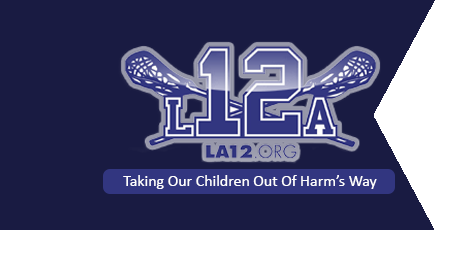Chest protectors may not prevent sports-related heart trauma
Defibrillator used to revive parent at Lakeland High School
May 4, 2013Keep Youth Sports Safety Top of Mind: Guidelines from National Athletic Trainers’ Association
May 16, 2013Chest protectors may not prevent sports-related heart trauma
Ian’s mother, Lisa McGreevy of Northvale, said Sunday that she will lobby for children to wear chest protectors on the field, similar to those worn by lacrosse players.
While chest protectors could help with traumatic injuries like broken bones and serious bruising, there is no evidence that they protect against cardiac events caused by the trauma of being hit in the chest.
“If there is any evidence on that topic at all, it is actually to the contrary,” said Mike Oliver, executive director of National Operating Committee on Standards for Athletic Equipment (NOCSAE), an independent and non-profit standard-setting organization trying to improve athletic safety through scientific research and the creation of performance standards for protective equipment. “It’s a real difficult issue.”
The evidence goes against common sense.
“Logically if there’s a chest protector that would prevent the transmission of the energy of that blunt trauma to be transmitted to the chest and then to the heart then, theoretically, it might prevent it,” said Fuad Kiblawi, pediatric cardiologist at St. Joseph’s Children’s Hospital in Paterson.
However, none of the chest protectors on the market, according to Kiblawi, have been proven to decrease the chance of ventricular fibrillation, a problem with the heart’s rhythm that will cause victims to collapse within seconds and stop breathing.
Kiblawi added it might be worth taking a chance that a chest protector could slow down the impact to a speed that wouldn’t cause the medical chain reaction.
“Chest protectors, they haven’t been proven to help, but there’s no reason to assume it’s impossible that they would have any sort of benefit,” he said.
What happened Saturday to Ian McGreevy and the conversation about safety equipment that has followed isn’t new.
In 2010, 16-year-old Garfield resident Thomas Adams was hit in the chest with a baseball during a practice. He was wearing a catcher’s chest protector at the time and died.
In 2006, Wayne’s Steven Domalewski, was 12 when he was hit in the chest by a line drive. He was left brain-damaged after his brain was denied oxygen.
Thomas’ death and Steven’s disability were both attributed to commotio cordis, ventricular fibrillation caused by blunt trauma to the chest.
Commotio cordis is the second highest cause of death in athletes younger than 14, according to the American Academy of Pediatrics (AAP). Children ages 5 to 14 may be uniquely vulnerable to this blunt chest impact, the AAP said, because their chest walls are more elastic and more easily compressed.
It is unknown if commotio cordis caused Ian to stop breathing, but descriptions of the event make it a possibility, according to Kiblawi.
A policy statement from the AAP’s Council on Sports Medicine and Fitness in 2012 said, “Although protective gear can be a key preventive measure, it is not always effective. Research has shown that even with protective gear, the fatality rate for commotio cordis is alarmingly high at 90 percent.”
Beyond typical chest protectors worn by baseball and softball catchers, as well as lacrosse and hockey players, there are commercially available items like shirts with chest pads or plastic “heart guards.”
Charlie Coleman, who owns Farrier Sporting Goods in Wyckoff, regularly sells a protective shirt that has a pad in the chest area.
Coleman can date the uptick in sales to the Domalewski tragedy. After that incident, there was a call by some to take aluminum bats out of the youth games. Now, there is a discussion about chest protectors. There is no single, simple answer, however.
“Anything that would alter these variables might help,” said Kiblawi. “The softness of the ball and compactness of the ball, they’re directly related to the incidence of commotio cordis. So softer, more like safety balls for kids may help. Still, there’s no studies showing that.”
One issue with certain types of protective shirts, according to Oliver, is that the padding is typically in the center of the chest and not the “cardiac silhouette” where impact causes commotio cordis.
Preparation is as important as possible prevention, according to Gregg Heinzmann, director of the Youth Sports Council at Rutgers University.
“We should do all we can to minimize the risk of injury in young athletes,” Heinzmann said. “And we should include this injury among the considerations. The appropriate strategy on the part of the leagues and the recreation departments that administer youth sports is to train the coaches and re-evaluate their emergency action plans so that in the event of a serious injury, emergency medical personnel can arrive on the scene as quickly as possible.”
The Youth Sports Council recommendation is that there is one person at every game and practice with the skill and training to effectively administer CPR and use an automated external defibrillator.
Death is preventable, the AAP policy notes, by immediate response of CPR and the use of an automated external defibrillator. It was the quick-thinking CPR of Maureen Renaghan that Lisa McGreevy credits with saving her son Ian’s life.
Email: yoriok@northjersey.com

